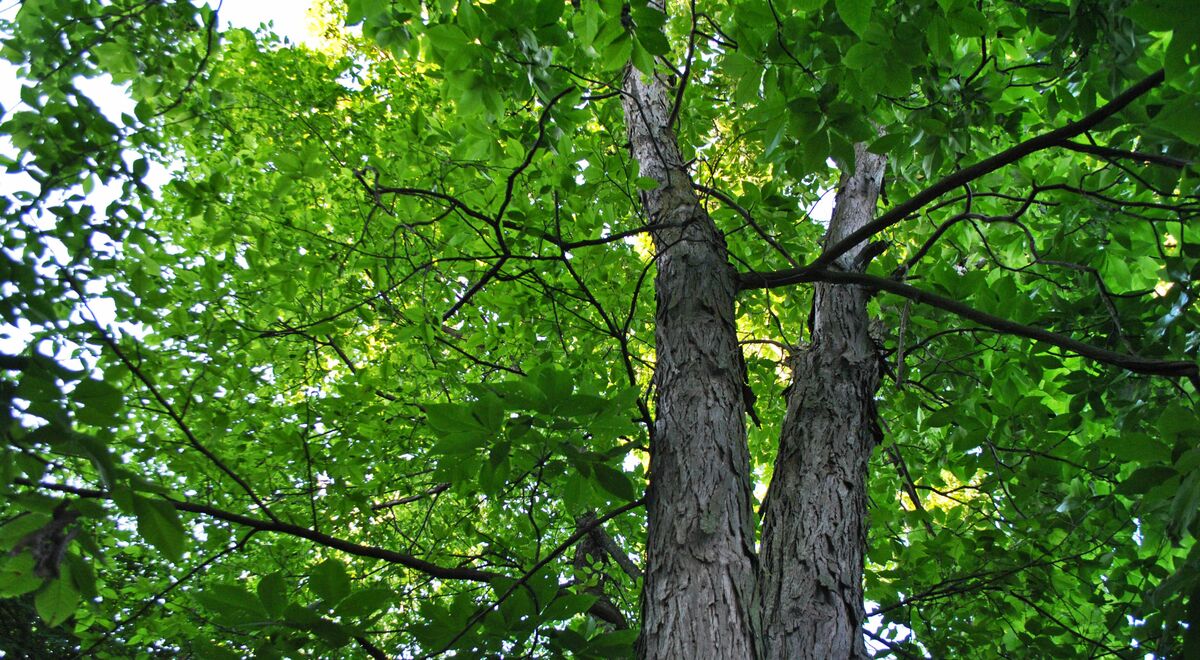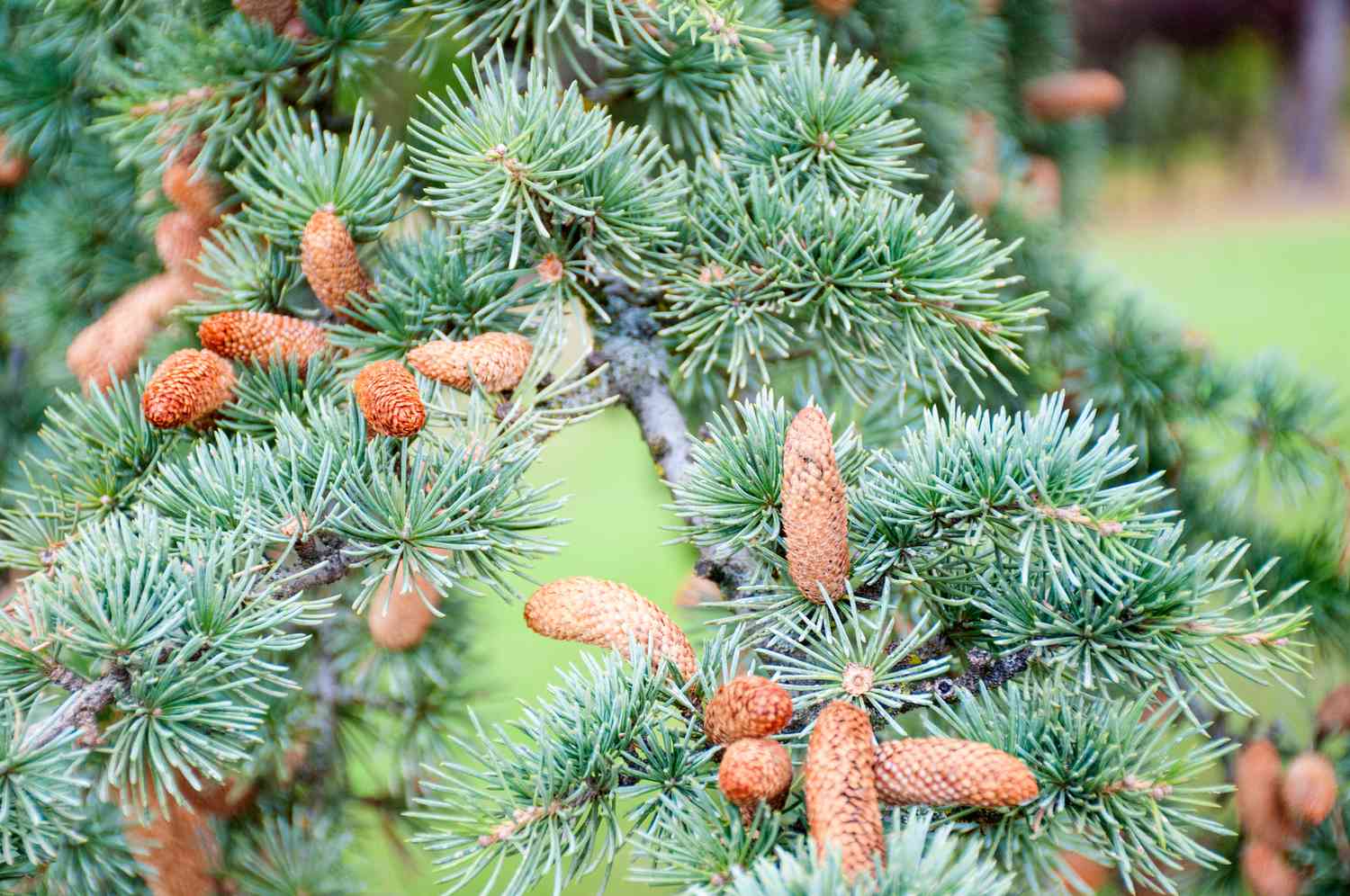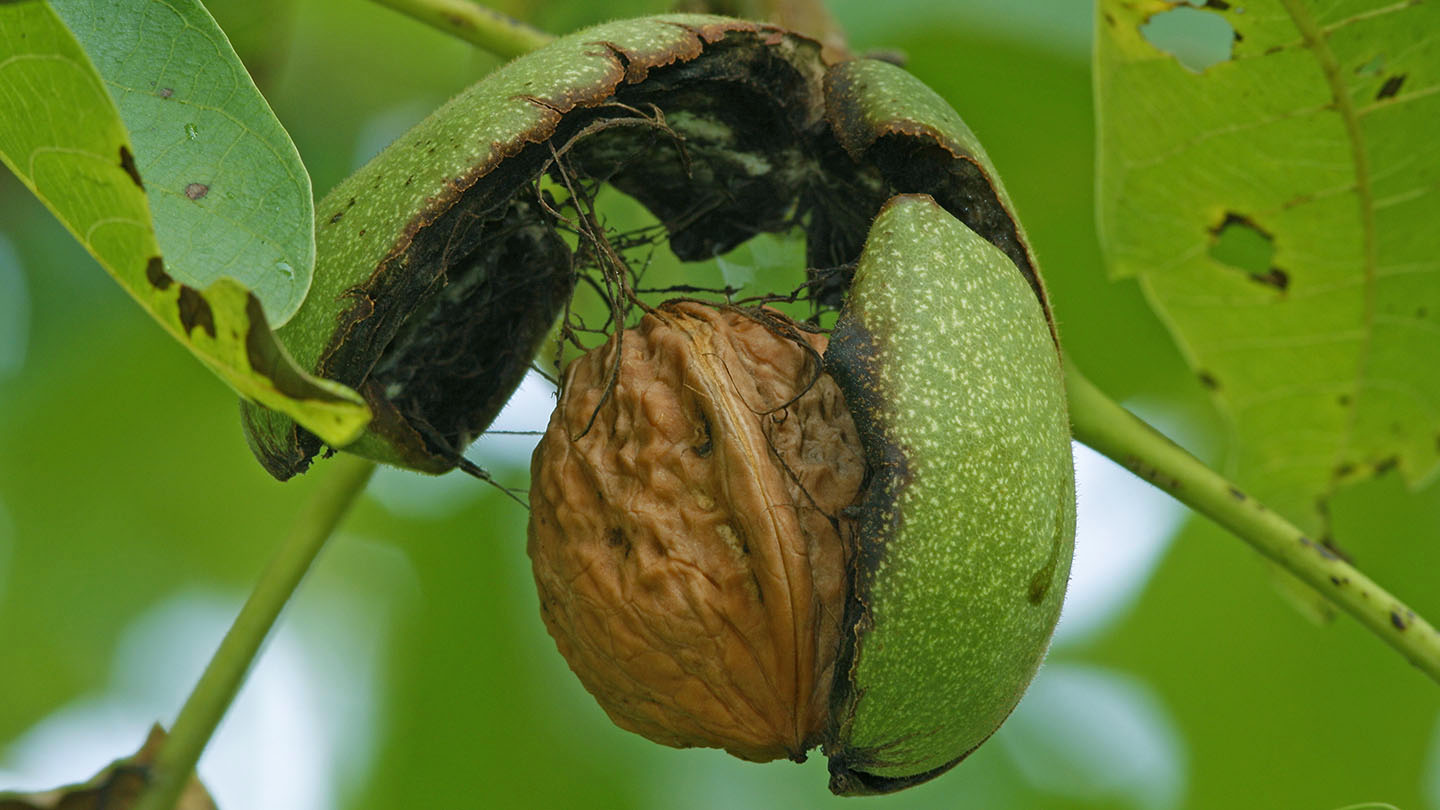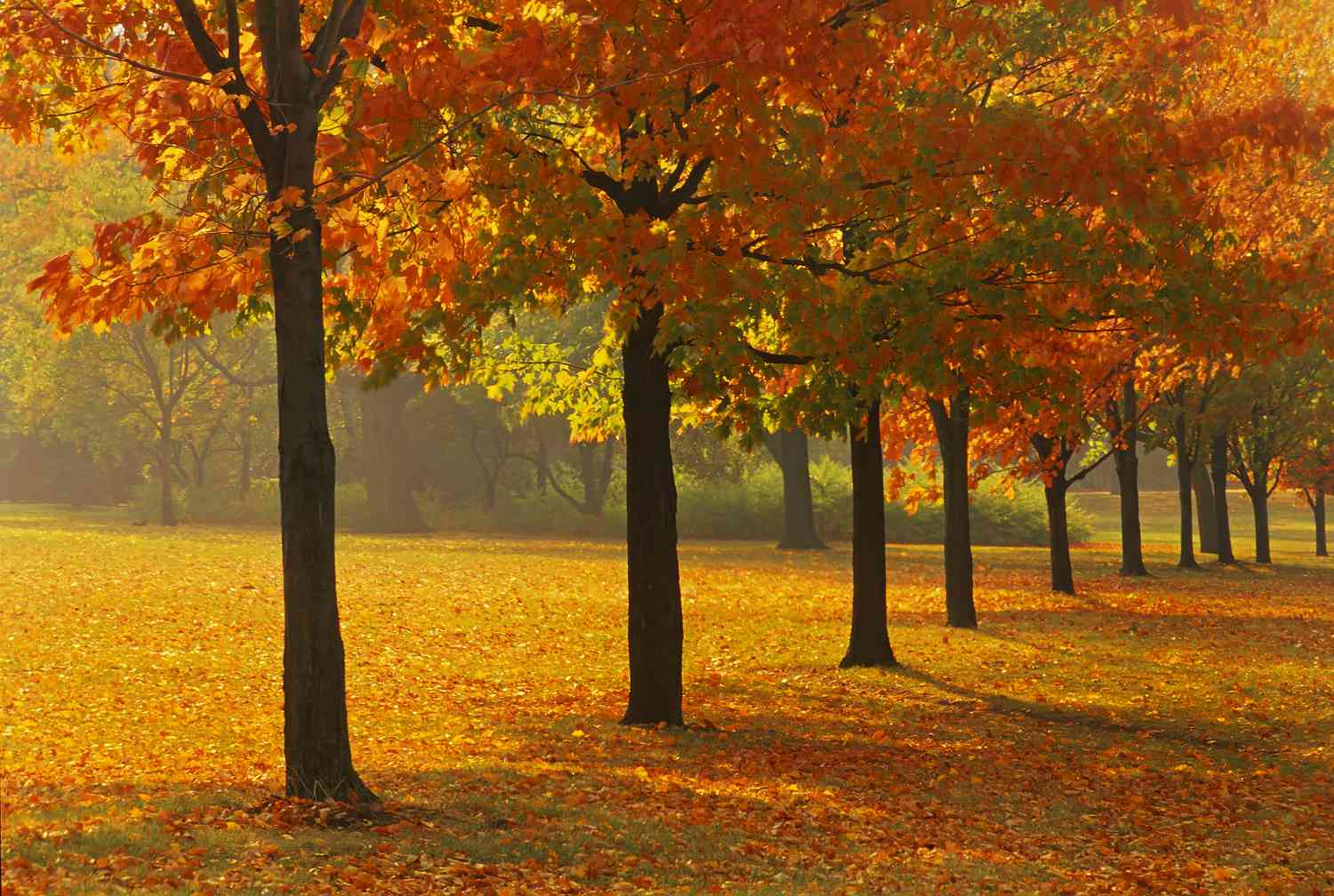Home>Gardening News and Trends>Latest News>What Do Trees Represent


Latest News
What Do Trees Represent
Modified: January 22, 2024
Discover the latest news on what trees represent and how they impact our lives. Gain insights into the symbolism and significance behind these majestic beings.
(Many of the links in this article redirect to a specific reviewed product. Your purchase of these products through affiliate links helps to generate commission for Chicagolandgardening.com, at no extra cost. Learn more)
Table of Contents
- Introduction
- Importance of Trees
- Cultural and Symbolic Significance
- Trees in Mythology and Religion
- Trees as a Source of Healing and Wellness
- Trees as a Connection to Nature
- Trees as a Symbol of Growth and Renewal
- Trees as a Representation of Strength and Endurance
- Trees as a Sign of Stability and Rootedness
- Conclusion
Introduction
Trees are not only essential for the environment, but they also hold immense cultural and symbolic significance. From ancient mythology to religious beliefs, trees have been revered and respected by civilizations throughout history. In addition to their aesthetic beauty and the life-sustaining oxygen they provide, trees are seen as a connection to nature, a source of healing, and a symbol of growth and renewal. They represent strength, stability, and endurance.
In today’s fast-paced world, where concrete jungles dominate landscapes, it is crucial to recognize the importance of trees and their role in maintaining ecological balance. As global concerns about climate change and deforestation continue to grow, understanding the significance of trees becomes even more crucial.
In this article, we will explore the cultural and symbolic significance of trees, their representation in mythology and religion, their role in promoting healing and wellness, and their connection to nature. We will also delve into the ways in which trees symbolize growth, renewal, strength, stability, and rootedness. By the end, we hope to highlight the profound impact that trees have on our lives and inspire a deeper appreciation for these magnificent beings.
Importance of Trees
Trees play a vital role in sustaining life on Earth. They are often referred to as the “lungs of the planet” as they absorb carbon dioxide and release oxygen through photosynthesis. This process helps to reduce greenhouse gases and mitigate the effects of climate change. Additionally, trees provide a habitat for countless species of flora and fauna, supporting biodiversity and maintaining the delicate balance of ecosystems.
Not only do trees have environmental benefits, but they also have a significant impact on our daily lives. They provide shade and cool urban areas, reducing the need for excessive air conditioning and saving energy. Trees act as natural air filters, capturing pollutants and improving air quality. They also help in preventing soil erosion by holding the soil together with their extensive root systems.
Furthermore, trees contribute to the aesthetic appeal of landscapes, enhancing the beauty of parks, gardens, and neighborhoods. Their presence has a calming effect on our minds and reduces stress, leading to improved mental well-being. Research has shown that spending time in nature, surrounded by trees, can reduce blood pressure, increase our attention spans, and boost our overall mood.
In terms of economics, trees offer numerous benefits. They increase property values, as well-manicured and well-maintained trees are considered desirable in residential and commercial areas. Trees can also help to reduce energy costs by providing shade in the summer and acting as windbreakers in the winter.
Moreover, trees play a crucial role in supporting sustainable industries. The timber industry relies on trees for the production of wood products such as furniture, construction materials, and paper. Additionally, trees provide a renewable source of energy through biomass and biofuel production.
In summary, the importance of trees cannot be overstated. They are vital for the health of our planet, our communities, and ourselves. By recognizing their significance and taking steps to protect and preserve them, we can ensure a sustainable future for generations to come.
Cultural and Symbolic Significance
Trees hold immense cultural and symbolic significance in various societies around the world. They have been revered and regarded as sacred in different cultures and have become a source of inspiration for art, literature, and spiritual practices.
Many ancient civilizations, such as the Greeks and Romans, believed that trees were inhabited by divine spirits. They associated different trees with specific deities and believed that these trees held special powers. For example, the olive tree was considered sacred to the goddess Athena, representing wisdom and victory.
In Celtic folklore, trees were considered the abode of mythical creatures and gateways to other realms. The Celts placed great importance on certain trees such as the oak, which symbolized strength and endurance, and the yew, which represented wisdom and immortality.
The symbolism of trees is also prevalent in Asian cultures. In Japan, the cherry blossom tree holds significant cultural value, representing the transient nature of life and the beauty of impermanence. In China, the plum tree is a symbol of resilience and perseverance, often depicted in traditional art and literature.
Furthermore, trees have been used as symbols in religious and spiritual practices. The Bodhi tree, under which the Buddha attained enlightenment, is considered one of the most sacred trees in Buddhism. The Tree of Life is a prominent symbol in many faiths, representing the interconnectedness of all living beings.
Additionally, trees have been associated with fertility and the cycle of life. In many cultures, planting a tree at the birth of a child is seen as a way to ensure a prosperous and long life. Similarly, trees are often used in wedding ceremonies to symbolize the strength and endurance of the couple’s love.
In summary, trees hold deep cultural and symbolic significance across different societies. Whether representing wisdom, strength, spirituality, or the cycle of life, trees are intertwined with human culture and serve as a reminder of our connection to the natural world.
Trees in Mythology and Religion
Trees have played a prominent role in mythology and religion, symbolizing various aspects of spirituality and divine connection. They are often seen as bridges between the earthly and the divine realms, serving as a pathway for communication with higher powers.
In Norse mythology, the mythical tree Yggdrasil is considered the “World Tree.” It is depicted as the center of the cosmos, connecting different realms such as Asgard, Midgard, and Niflheim. Yggdrasil is seen as the source of life and knowledge, supporting the entire universe.
In Hinduism, the sacred fig tree, known as the Peepal tree, is considered highly auspicious. It is believed to be a manifestation of Lord Vishnu and is associated with wisdom and enlightenment. Many Hindus perform rituals and meditate under the shade of the Peepal tree for spiritual growth and guidance.
Similarly, in Celtic mythology, the oak tree is revered and often associated with deities such as the Oak King and the Green Man. The oak represents strength, fertility, and protection. It is a symbol of vitality and endurance in the face of challenges.
Christianity also holds trees in high esteem. The story of the Garden of Eden features the Tree of Knowledge and the Tree of Life, representing the human quest for wisdom and eternal life. Additionally, the Christmas tree is a cherished symbol in Christian traditions, representing everlasting life through its evergreen nature.
Furthermore, trees hold significance in Indigenous cultures around the world. For Native Americans, the cedar tree is considered sacred and has multiple uses in ceremonies, medicine, and daily life. The tree is believed to possess protective and healing powers, connecting the people with their ancestors and the spiritual realm.
Throughout history, trees have served as sacred sites and places of worship. Ancient groves were designated as sanctuaries, where rituals and offerings were performed. These sacred groves provided a sense of connection to the divine and a sanctuary for spiritual introspection.
Overall, trees are deeply intertwined with mythology and religion, representing the primal connection between humans and the divine. They act as symbols of sacred knowledge, spiritual growth, and divine presence, fostering a sense of reverence and awe in many cultures.
Trees as a Source of Healing and Wellness
Trees have long been recognized for their healing properties and their ability to promote overall well-being. Spending time in nature, surrounded by trees, has been proven to have numerous physical, mental, and emotional health benefits.
One of the ways trees contribute to healing and wellness is through the production of phytoncides. Phytoncides are antimicrobial compounds released by trees that help to protect them from insects and pathogens. When humans breathe in these phytoncides, it can boost the immune system and help to reduce stress levels.
Research has shown that spending time in forests, known as forest bathing or shinrin-yoku in Japanese, has a calming effect on the mind and reduces stress. The practice involves immersing oneself in the peaceful atmosphere of the forest, breathing in the fresh air and taking in the sights and sounds of nature. Forest bathing has been shown to lower heart rate, blood pressure, and cortisol levels, promoting relaxation and mental well-being.
Additionally, nature has a restorative effect on cognitive function. Studies have found that exposure to green spaces improves attention and focus, enhances creativity, and can even help to reduce symptoms of mental fatigue and attention deficit disorders. This is particularly beneficial in our modern, technology-driven world where our attention is constantly pulled in different directions.
Trees also contribute to our physical health. The fresh air produced by trees improves air quality and reduces the risk of respiratory ailments. The shade provided by trees helps to cool down urban areas, reducing the risk of heat-related illnesses during hot summer months. Furthermore, being in nature encourages physical activity, such as walking or hiking, which has numerous cardiovascular and fitness benefits.
Moreover, the visual beauty of trees has a positive impact on our emotions. Studies have shown that exposure to green spaces and nature scenes increases feelings of happiness, relaxation, and overall life satisfaction. The serene and peaceful environment created by trees can help to alleviate symptoms of anxiety and depression.
Incorporating trees and green spaces into our urban environments is crucial for promoting healing and wellness. Access to green spaces, such as parks and gardens, allows us to reap the benefits of nature’s healing power even within city limits. Planting trees in our neighborhoods and communities can contribute to a healthier and more vibrant environment, benefiting both our physical and mental well-being.
In summary, trees provide a source of healing and wellness. Their presence in nature promotes relaxation, reduces stress, improves cognitive function, and enhances physical health. Incorporating trees and green spaces into our daily lives can have a profound impact on our overall well-being, highlighting the importance of preserving and protecting these natural treasures.
Trees as a Connection to Nature
Trees serve as a vital link between humans and the natural world, acting as a conduit for our connection to nature. They provide us with a tangible and visible representation of the beauty and power of the natural environment.
One of the most evident ways in which trees connect us to nature is through their physical presence. Standing tall and majestic, trees remind us of the vastness and grandeur of the natural world. Their branches reach towards the sky, symbolizing the limitless possibilities and the infinite expanse of the universe.
Being close to trees encourages us to engage our senses and become present in the moment. The rustling of leaves, the scent of flowers or pine, and the gentle sway of branches in the wind all stimulate our senses and bring us closer to the natural environment. This sensory experience grounds us in the here and now, allowing us to appreciate the beauty and intricacy of nature.
Moreover, spending time in forests or wooded areas allows us to witness the incredible diversity of flora and fauna that thrive in these habitats. Trees create ecosystems, supporting a wide range of plant and animal species. Observing these interactions and witnessing the circle of life unfold reminds us of our interconnectedness with all living beings and the delicate balance of the natural world.
Trees also provide a valuable lesson in patience and the cyclical nature of life. Through the changing of seasons, we witness the growth and transformation of trees. From barren branches in winter to lush foliage in spring, from vibrant colors in autumn to shedding leaves in preparation for a new cycle, trees teach us the importance of embracing change and finding beauty in every phase of life.
In addition to their physical presence, trees offer us a sanctuary of peace and tranquility. Being in nature, surrounded by trees, allows us to escape the noise and distractions of modern life. In their shade, we find respite from the hustle and bustle, and a space to reflect, meditate, and reconnect with ourselves.
Furthermore, trees provide us with a sense of awe and wonderment. Looking up at the towering height of a tree, or witnessing the intricate patterns of its branches, fills us with a deep sense of appreciation for the intricacy and complexity of the natural world. This sense of awe nurtures our connection to nature and fosters a deep respect for its power and beauty.
As humans, it is in our nature to seek a connection with the natural world. Trees, with their grounding presence and awe-inspiring beauty, serve as a bridge between our urban lives and the wildness of nature. By cultivating a relationship with trees and spending time in their presence, we can nurture our connection to the natural environment and gain a renewed sense of harmony and balance.
Trees as a Symbol of Growth and Renewal
Trees have long been cherished as symbols of growth, resilience, and renewal. Their life cycle, from seed to towering tree, represents the continuous process of growth and transformation that occurs in nature and in our own lives.
As dormant seeds sprout and grow into saplings, trees represent the potential for growth and new beginnings. They remind us that even in the darkest and harshest conditions, life can emerge and flourish. This symbolism is particularly poignant in the early spring, when barren branches burst forth with fresh leaves, signaling the arrival of a new season and the promise of growth and renewal.
Observing the steady growth of a tree over the years reminds us of the importance of patience, perseverance, and the slow but steady progress towards our goals. Just as trees slowly extend their roots deep into the ground and reach for the sky, we too must cultivate strong foundations and aim for growth that is sustainable and enduring.
Trees also serve as a reminder of the cyclical nature of life. They shed their leaves in autumn, only to sprout new ones in spring. This cycle represents the process of shedding the old, releasing what no longer serves us, and embracing new beginnings. It teaches us that growth often requires letting go of what is familiar and comfortable, and being open to change and transformation.
Furthermore, trees showcase the incredible resilience of nature. In the face of adverse conditions such as storms, droughts, or harsh winters, trees adapt and find ways to survive. They bend with the wind, develop deep root systems for stability, and even regenerate from damage. This resilience serves as an inspiration for us to face challenges head-on, to be flexible, and to find strength and renewal even in the most difficult times.
The symbolism of growth and renewal that trees embody extends beyond the individual tree itself. Forests, with their vast interconnected root systems, represent a collective resilience and interconnectedness. Just as individual trees support each other, communities come together to support growth, renewal, and healing.
In our own lives, trees can remind us of the importance of personal growth and self-care. Just as trees require nourishment, sunlight, and space to grow, we too need to prioritize our well-being and create an environment conducive to growth and renewal. Taking the time to nurture our physical, mental, and emotional health allows us to flourish and embrace new opportunities.
In summary, trees symbolize the inherent capacity for growth and renewal in both nature and ourselves. They teach us the significance of patience, resilience, and embracing change. By embracing the symbolism of trees, we can find inspiration to navigate the challenges of life, let go of what no longer serves us, and cultivate a path of growth, transformation, and renewal.
Trees as a Representation of Strength and Endurance
Trees stand as powerful symbols of strength and endurance, often weathering the test of time and persevering through adversity. Their deeply rooted nature and resilience in the face of challenges inspire us to cultivate our own inner strength and to keep pushing forward.
One of the most striking aspects of trees is their ability to withstand harsh conditions. From extreme weather events to insect infestations, trees often face numerous challenges throughout their lifespan. Yet, they adapt and find ways to survive. Their roots anchor them firmly to the ground, providing stability and support, while their trunks and branches are designed to withstand the forces of nature. In this way, trees demonstrate the power of resilience and the importance of standing tall even in the face of adversity.
Furthermore, the sheer longevity of trees is a testament to their strength and endurance. Some tree species can live for hundreds, if not thousands, of years. They witness the passing of generations, the rise and fall of civilizations, and the changes in the landscape. Their ability to endure and thrive over such extended periods signifies their extraordinary strength and serves as a reminder of the power of endurance.
In addition, trees have the remarkable ability to heal themselves. When a branch is damaged or disease strikes, trees employ various defense mechanisms to protect themselves and promote healing. They can compartmentalize damaged areas, isolate infections, and produce new growth to replace what has been lost. This inherent healing ability symbolizes the importance of resilience and the capacity to recover from wounds and setbacks.
Trees also display strength in their support of other living beings. Their sturdy branches provide shelter and nesting sites for birds, while their ample foliage offers shade and food for numerous creatures. The symbiotic relationships that trees foster with other organisms highlight the strength that can be found in supporting and nurturing others, reinforcing the idea that true strength lies in unity and cooperation.
Moreover, trees have long been associated with human achievements and significant events. Traditionally, trees were honored by planting them to commemorate milestones such as births, weddings, and the establishment of communities. This practice symbolizes the enduring strength and the lasting legacy that trees represent.
In summary, trees exemplify strength and endurance through their ability to withstand adversity, adapt to changing environments, and heal from damage. Their long lifespan and support of other organisms further showcase their inherent power. By looking to trees for inspiration, we can cultivate our own inner strength, build resilience, and endure life’s challenges with fortitude.
Trees as a Sign of Stability and Rootedness
Trees symbolize stability and rootedness, serving as a reminder of the importance of having a strong foundation and connection to our roots. With their firmly entrenched roots in the ground, trees stand tall and unwavering, representing the qualities of stability, grounding, and resilience.
One of the key aspects of trees that exemplify stability is their extensive root systems. The roots of a tree anchor it firmly into the earth, providing stability even in the face of strong winds and storms. This symbolism reminds us of the significance of having a solid foundation in our own lives. Just as trees need strong roots to withstand external forces, we too require a deep sense of rootedness to navigate life’s challenges.
Furthermore, trees can serve as a metaphor for our connection to our ancestral heritage and traditions. Just as a tree has roots that go deep into the earth, we have deep roots in our family, culture, and community. Trees remind us to honor and respect our roots, drawing strength from the wisdom and experiences of those who came before us.
In addition to representing stability and rootedness, trees often serve as gathering points and landmarks in communities. Think of the age-old practice of meeting “under the old oak tree” or using a particular tree as a point of reference for directions. These engagements highlight the role of trees in fostering a sense of community, providing a meeting place and a sense of belonging to those who gather around them.
Trees also offer a sense of constancy in a rapidly changing world. As we witness the passing of seasons, the growth and shedding of leaves, and the enduring presence of trees year after year, we are reminded that amidst the ebb and flow of life, there are enduring elements that provide stability and continuity.
Moreover, trees can instill a feeling of peace and serenity within us. Being in the presence of trees allows us to connect with nature and experience a sense of calm and groundedness. Their steadfast nature brings us back to the present moment, helping to alleviate worries and anxieties, and promoting a sense of stability in our thoughts and emotions.
Overall, trees serve as a powerful symbol of stability and rootedness. Through their extensive root systems, they remind us of the importance of having a solid foundation in our lives. They represent our connection to our ancestral heritage and provide a sense of community and constancy in a rapidly changing world. By honoring and embracing these qualities, we can cultivate a sense of stability and grounding, leading to a more balanced and fulfilling life.
Conclusion
Trees hold a profound significance in our lives, serving as more than just a vital component of the environment. From their importance in sustaining life on Earth to their cultural and symbolic significance, trees have a profound impact on our physical, mental, and spiritual well-being.
We have explored how trees represent growth, renewal, and endurance. They teach us valuable lessons about resilience, perseverance, and the cyclical nature of life. Their stability and rootedness remind us of the importance of having a solid foundation and a connection to our roots. Furthermore, trees provide us with a connection to nature, fostering a sense of awe and appreciation for the world around us.
Beyond their practical benefits, trees symbolize something greater. They represent the interconnectedness of all living beings, serving as sanctuaries for diverse ecosystems and habitats. Trees also provide a link to our cultural and spiritual traditions, as they have been revered and honored throughout human history.
As we face environmental challenges and an increasing disconnect from nature, it is crucial to recognize and appreciate the importance of trees in our lives. By preserving and protecting them, we ensure a sustainable future for generations to come. Moreover, by understanding the symbolism and significance of trees, we can find inspiration, solace, and guidance in our own journeys of personal growth and well-being.
So let us take a moment to pause and reflect on the profound impact of trees. Let us immerse ourselves in their beauty, seek solace in their shade, and learn from their resilience. In doing so, we can deepen our connection to the natural world, cultivate a sense of harmony and balance, and contribute to the preservation of these majestic beings that enrich our lives in countless ways.








